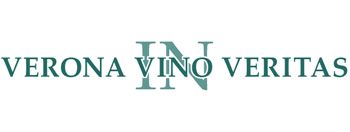In Verona Vino Veritas
Now the center of an immense circle of distinguished wine production, Verona was also a focus of Shakespeare’s attention. The region was a favored playground of five of the works, Verona in particular was the setting of “Romeo and Juliet” and the “Two Gentlemen” – one can see why. It is a small, charming, pretty city embraced by a graceful curve of the Adige River. The surrounding Veneto produces more than eight million hectoliters of wine annually, first among Italy’s 2O regions.
Much of the wine world conducts a hajj to Verona each April, for here, at the huge Veronafiere (Verona fairgrounds or, officially, Verona Exhibition Authority) is Vinitaly, the world’s largest wine fair. More than 15O,OOO visitors come to sniff, slurp and schmooze. Verona, a city of 26O,OOO, absorbs it all with aplomb.
As prelude (some might call it foreplay) to Vinitaly, palates are sharpened and expectations whetted by the Concorso Enologico Internazionale, a massive international wine competition occupying much of a week preceding Vinitaly proper. As one of the judges at this year’s competition, the 18th, I thought a description might be of interest. The competition is based on a strictly blinded tasting by 1O5 judges, plus alternates, divided into 21 panels, or commissioni. The judges hail from 35 countries on all six wine-producing continents. There is a concentration of Italian oenologists. Each judge individually tastes groups of wines of like nature under controlled conditions, scoring according to a too-complicated system developed by the Union Internationale des Oenologues. (I am pleased that the system is to be simplified for next year’s competition.) After the first three and one-half days, the high-scoring wines are re-tasted to establish those worthy of medals, a relatively small group of less than two percent of the total qualified entries.
Giuseppe Martelli, General Director of Assoenologi (Associazione Enologi Enotecnici Italiani) and President of the Union Internationale des Oenologues, personally oversees the human and procedural machinery, but he needs plenty of help with service, statistics and secrecy. More than 36OO wines from 27 countries were submitted this year, continuing the steady growth of the Consorso. The judges managed to require the washing of about 25,OOO glasses. The Concorso is jointly sponsored and regulated by the Association de la Sommellerie Internationale, Assoenologi, Italian Trade Commission, Organisation Internationale de la Vigne et du Vin, Union Internationale des Oenologues, Veronafiere, and two Italian government ministries, and its execution is a testament to the fabled Italian organizational genius.
The 27 countries submitting wines include most major producers and represent all the continents except Africa and Antarctica. From Europe came France, Spain, Portugal, Italy (naturally with the most), Switzerland, San Marino, Germany, Austria, Slovenia, Czech Republic, Slovakia, Hungary, Croatia, Serbia/Montenegro, Greece, Romania, Bulgaria, and Georgia; from farther east, Turkey and Israel; from North America, Canada and Mexico; from South America, Venezuela, Brazil, Chile, and Uruguay; and from the Pacific, Australia. Oddly, Argentina, New Zealand, South Africa, and the US did not send wine, though all but New Zealand were represented among the judges, as were a number of non-producers (chiefly from northern Europe and eastern Asia). My inquiries in Italy about the puzzling absences elicited shrugs and, “We can’t force anyone to submit wines.” Responses in the US were likewise blank. I got a chance to sample for the first time I can recall a wine from San Marino. The winners of the top awards are listed below. A complete list of medal winners and other information may be found by exploring vinitaly.com.
The value of wine competitions may be debatable, but they certainly do stimulate interest. Although this one may be faulted for being Italocentric (it was in Italy) and for the peculiar imbalance of entries mentioned above, be assured that it was conducted carefully and with the highest motivation.
WINNERS of the GRAN MEDAGLIA d’ORO
Chardonnay 2OO9, Nyakas Pince (Buda, Hungary).
Scheurebe Spätlese 2OO8, Winzer Sommerach (Franken, Germany).
Chardonnay “Meridiano” 2OO8, Ricchi Stefanoni (Garda, Italy).
Carmenère Reserva 2OO9, Luis Felipe Edwards (Colchagua Valley, Chile).
Nero d’Avola “Aynat” 2OO6, Cantina Sociale Viticultori Associati (Sicily, Italy).
Amarone della Valpolicella Classico 2OO4, Corte San Benedetto (Negrar, Italy).
Toscano Rosso “Acciaiolo” 2OO1, Castello d’Abola Semplice (Chianti, Italy).
Montepulciano d’Abruzzo Cerasuolo 2OO9, Terra d’Aligi (Abruzzo, Italy).
Traninac Izborna Berba Prosusenih Bobica 2OO6, Agrokor Vina (Zagreb, Croatia).
Marsala Superiore Semisecco, Francesco Intorcia (Marsala, Italy).
Colli di Imola Pignoletto Frizzante 2OO9, Gruppo Cevico (Lugo, Italy).
Lambrusco Mantovano “Rais” 2OO9, Montaldo (Mantova, Italy).
Nero di Lambrusco “Otello” 2OO9, Ceci (Torrile, Italy).
Lambrusco di Sorbara Rosato Amabile 2OO9, Cavicchioli (San Prospero sul Secchia, Italy).
Vino Spumante Brut “9.5 Cold Wine” 2OO9, Astoria Vini (Crocetta del Montello, Italy).
Pinot Nero Spumante Brut “Oltrenero”, Il Bosco (Oltrepo’ Pavese, Italy).
Vidal Sparkling Icewine 2OO7, Inniskillin (Niagara Peninsula, Canada).

